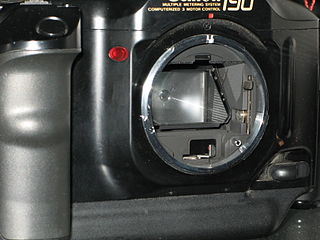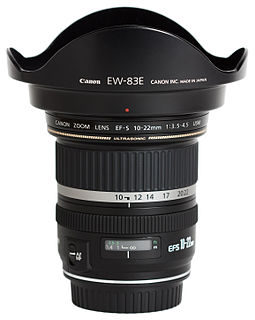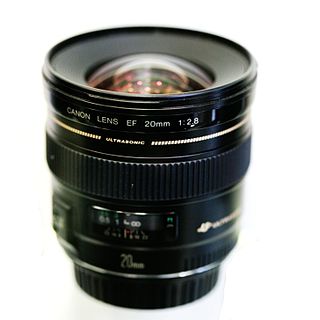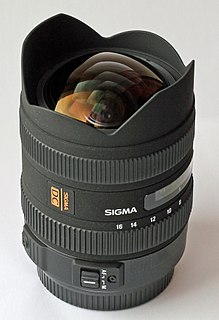 | |
| Maker | Canon |
|---|---|
| Technical data | |
| Type | Zoom |
| Focus drive | Ultrasonic motor |
| Focal length | 28–70 mm |
| Aperture (max/min) | f/2.8–f/22 |
| Close focus distance | 0.5 m |
| Max. magnification | 0.18 |
| Diaphragm blades | 8 |
| Construction | 16 elements in 11 groups |
| Features | |
| Short back focus | |
| Lens-based stabilization | |
| Macro capable | |
| Application | Pro Standard Zoom |
| Physical | |
| Max. length | 117.6 mm |
| Diameter | 83.2 mm |
| Weight | 880 g |
| Filter diameter | 77 mm |
| Accessories | |
| Lens hood | EW-83B |
| History | |
| Introduction | November 1993 |
The Canon EF 28–70mm f/2.8L is an EF mount wide-to-normal zoom lens made by Canon from 1993 to 2002. It was replaced by the 24–70mm f/2.8L.

Introduced in 1987, the EF lens mount is the standard lens mount on the Canon EOS family of SLR film and digital cameras. EF stands for "Electro-Focus": automatic focusing on EF lenses is handled by a dedicated electric motor built into the lens. Mechanically, it is a bayonet-style mount, and all communication between camera and lens takes place through electrical contacts; there are no mechanical levers or plungers.

In photography and cinematography, a wide-angle lens refers to a lens whose focal length is substantially smaller than the focal length of a normal lens for a given film plane. This type of lens allows more of the scene to be included in the photograph, which is useful in architectural, interior and landscape photography where the photographer may not be able to move farther from the scene to photograph it.
In photography and cinematography, depth compression and expansion with shorter or longer focal lengths introduces noticeable, and sometimes disturbing, distortion while a normal lens is a lens that reproduces a field of view that appears "natural" to a human observer.
Among standard zoom lenses, it is known for very good contrast and sharpness and for its extremely low chromatic aberration and barrel distortion. [1] It has a metal body and neutral color rendition.[ citation needed ] Although discontinued since 2002 it is still a high ranking lens according to DxOMark among Canon zoom lenses and other standard zoom lenses. Like many other zoom lenses, it exhibits some barrel distortion at the wide end of its range.

Contrast is the difference in luminance or colour that makes an object distinguishable. In visual perception of the real world, contrast is determined by the difference in the color and brightness of the object and other objects within the same field of view. The human visual system is more sensitive to contrast than absolute luminance; we can perceive the world similarly regardless of the huge changes in illumination over the day or from place to place. The maximum contrast of an image is the contrast ratio or dynamic range.

In optics, chromatic aberration is a failure of a lens to focus all colors to the same point. It is caused by dispersion: the refractive index of the lens elements varies with the wavelength of light. The refractive index of most transparent materials decreases with increasing wavelength. Since the focal length of a lens depends on the refractive index, this variation in refractive index affects focusing. Chromatic aberration manifests itself as "fringes" of color along boundaries that separate dark and bright parts of the image.
A unique aspect of the 28–70 mm f/2.8L (and 24–70 mm f/2.8L) is that its barrel extends as it zooms toward its shortest focal length. When used with the supplied "petaled" lens hood, which attaches to a non-moving part of the lens, this extension results in a properly matched shade at every angle of view. Most zoom lens hoods are designed for only the widest angle of view, offering progressively inadequate shade at longer focal lengths.














